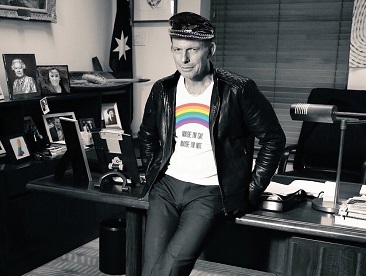Across the nation, less than four per cent of public statues are of women. It’s time to fully recognise the legacy of Rockhampton’s Annie Wheeler, writes Dr Benjamin T Jones.
MOST AUSTRALIAN cities have a number of statues in prominent places. These tend to honour politicians, philanthropists and other people who have made a positive contribution to their community.
To have a statue erected in your honour is a rare achievement but there is one glaring problem — across the nation, less than four per cent of public statues are of women. This is a pretty damning statistic in a country that prides itself on egalitarianism and a fair go.
What does it say about Australia that there are more statues of animals than there are of women? Rockhampton is probably the only city in Australia to also have more statues of animals than men. Any visitor to the "beef capital" will notice the dozen or so bulls dotted around town — a quirky tourist attraction.
But the city also recognises its ANZAC legacy with several impressive monuments as well as bronze statues honouring explorer Charles Archer, jockey Ken Russell and tennis champion Rod Laver.
Historian Professor Clare Wright has argued that it is time to smash the bronze ceiling and recognise the contribution of women in Australia. Her Melbourne-based campaign, A Monument of One’s Own, has already successfully won commitments to build six new statues.
In Rockhampton, state MP Barry O’Rourke and candidate for the federal seat of Capricornia, Russell Robertson, have led the charge for statue equity.
O’Rourke is petitioning the Rockhampton Regional Council to secure funding for a statue of Annie Wheeler, affectionately known as the "Mother of the Queenslanders".
He wrote to the Council’s chief executive officer on 9 March, noting that there is a:
'... significant push for there to be more statues in public places honouring Queensland women.'
Meanwhile, Robertson has started a petition on his website to garner support for a statue, noting that Wheeler:
'... embodies the CQ [Central Queensland] spirit of community and needs to be remembered.'
Annie Margaret Laurie was born on 10 December 1867 in the small town of Dingo in the Central Highlands of Queensland.
The daughter of Scottish migrants, she was sent 150 kilometres east to study at the Rockhampton convent school. She married Henry Wheeler in 1896 and lived near Blackwater but after her husband’s death in 1903, she again made Rockhampton her home.
During World War I, Queenslanders rallied to serve the empire and Wheeler was determined to contribute to the cause. She initially served as a nurse at a hospital in Sussex but was conscious of poor communication between the soldiers on the front line and their families back home.
She moved to London and made it her mission to contact the families of soldiers from central Queensland and keep them informed about their loved ones. Wheeler kept meticulous notes and was a vital channel of communication between soldiers and families.
Many Queenslanders who had become frustrated with delays and lost messages through official army correspondence would contact Wheeler directly and she would pass on news, parcels and comfort items. By the end of the war, Wheeler had over 2,300 soldiers on her list.

The importance of Wheeler’s work was acknowledged at the time. Her letters would be published in local newspapers and the people of Rockhampton especially would fundraise to help her work.
In 1917 a fundraising calendar was published to support her. It was called 'just the link between', with the front cover illustrating how Wheeler provided a vital link between soldiers and their families.
The calendar included praise from Premier T.J. Ryan who wrote:
‘In her, Queensland soldiers – whether in the trenches or in the hospitals – have a friend that never fails them.'
The Catholic Bishop of Rockhampton, Joseph Shiel, noted that few letters interested his parishioners as much as Wheeler's, as any news about their loved ones ‘is so comforting’.
Wheeler was honoured during her lifetime. The federal government of the day knew the value of her work and paid for her return journey to Rockhampton after the war.
She was greeted at the train station by over 5,000 well-wishers and public functions were held in her honour. Wheeler was awarded an Order of the British Empire and given a house in Emu Park in thanks for her service. She passed away on 23 October 1950.

Despite her celebrity during her lifetime, Annie Wheeler has slipped into obscurity.
There is a small plaque in her honour at Mt Thompson Memorial Gardens, Brisbane, but almost nothing in her hometown. A statue or bust in a prominent position in Rockhampton would be a fitting tribute — a way to continue her memory and legacy.
It would also be a practical way to curb the significant gender imbalance in public honour and acknowledge the contribution of women to Central Queensland and to Australian history.
Dr Benjamin T Jones is a historian, author and social commentator who currently works as Senior Lecturer, History at Central Queensland University. You can follow Dr Jones on Twitter @DrBenjaminJones or on his blog Thematic Musings.
 This work is licensed under a Creative Commons Attribution-NonCommercial-NoDerivs 3.0 Australia License
This work is licensed under a Creative Commons Attribution-NonCommercial-NoDerivs 3.0 Australia License
Support independent journalism Subscribe to IA.












